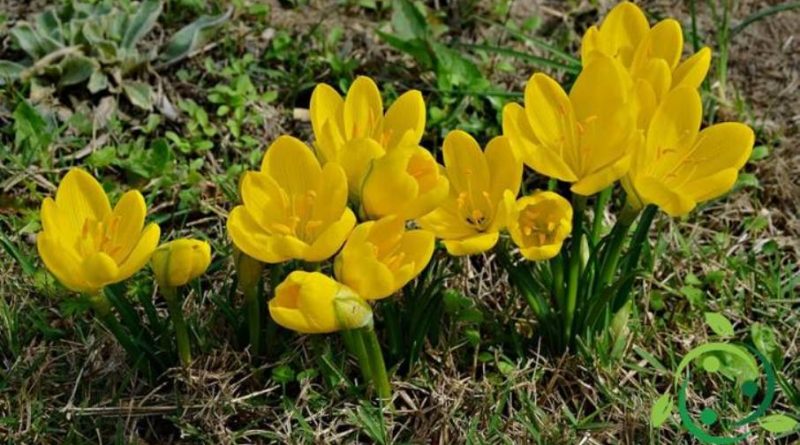How to cultivate the Sternbergia
How to cultivate the Sternbergia
The Sternbergia (Sternbergia Waldst. & Kit., 1804) is a genus of plants belonging to the Amaryllidaceae family. These plants are native to the Mediterranean basin, which include bulbous plants with blooms similar to the Crocus genus (hence the term saffron).
In this card we will see how to cultivate the Sternbergia following the most useful indications both in full ground and in pots.
These are plants with a very pleasant flowering of which the best known is Sternbergia lutea, which is a summer resting species, with vegetative growth in the autumn period after the first rains.
This species has small pear-shaped bulbs, dark green ribbon-like leathery leaves that, for the whole period of flowering, act as a crown with small cylindrical stems 15 -20 cm high, bearing on the beautiful and persistent apex solitary and erect flowers, with yellow coloring – sulfurea, which, in nature, lives well both in the undergrowth and in uncultivated, dry and sunny places but fears prolonged frost.
The Sternbergia, arrived in the spring period, goes into dormancy, something that is highlighted with the desiccation of the leaves; at this point the bulb goes into vegetative rest throughout the summer. After the vegetative restart, in the autumn period, after the rains it begins to vegetate again and blooms throughout the autumn period.
For the cultivation of the Sternbergia it is necessary to choose a rather bright exposure and with a period of insolation for many hours a day.
For this reason it is a plant that is better cultivated in the south even if it does not fear the cold even if the foliage is sensitive to frosts.
From the pedological point of view it adapts to numerous substrates but it is preferable to choose wet ones mixed with sand and well drained.
For fertilizing, especially if cultivated in the garden, it is advisable to mix very ripe and humified organic substance together with the cultivation soil at the time of planting the bulbs; moreover, to favor flowering, before the vegetative restart, to give further organic fertilizer with the same characteristics.
For irrigation, remember that plants grown outdoors do not need irrigation as the same rains will provide vegetative awakening and completion of the same; for those grown in pots, obviously, starting with the vegetative growth period, they must be watered keeping the substratum moist but without exceeding. It can be regulated with watering every 10-15 days.
As for the propagation technique, the Sternbergia propagates by seed and by division of the bulbils. The most widely used technique, which ensures plants identical to that mother, is obviously the propagation by division of the bulbs.
This technique involves separating the bulbils in the spring period, burying them in holes twice as deep as their diameter and height; the cloves are placed at a distance of 10 cm from each other, both in the row and between the rows.
The Sternbergia, from the phytosanitary point of view, is a rustic species and quite resistant to infestations by animal parasites. Like many bulbous plants, it fears rots caused by water excesses and fusariosis or mold from the bulbs.

